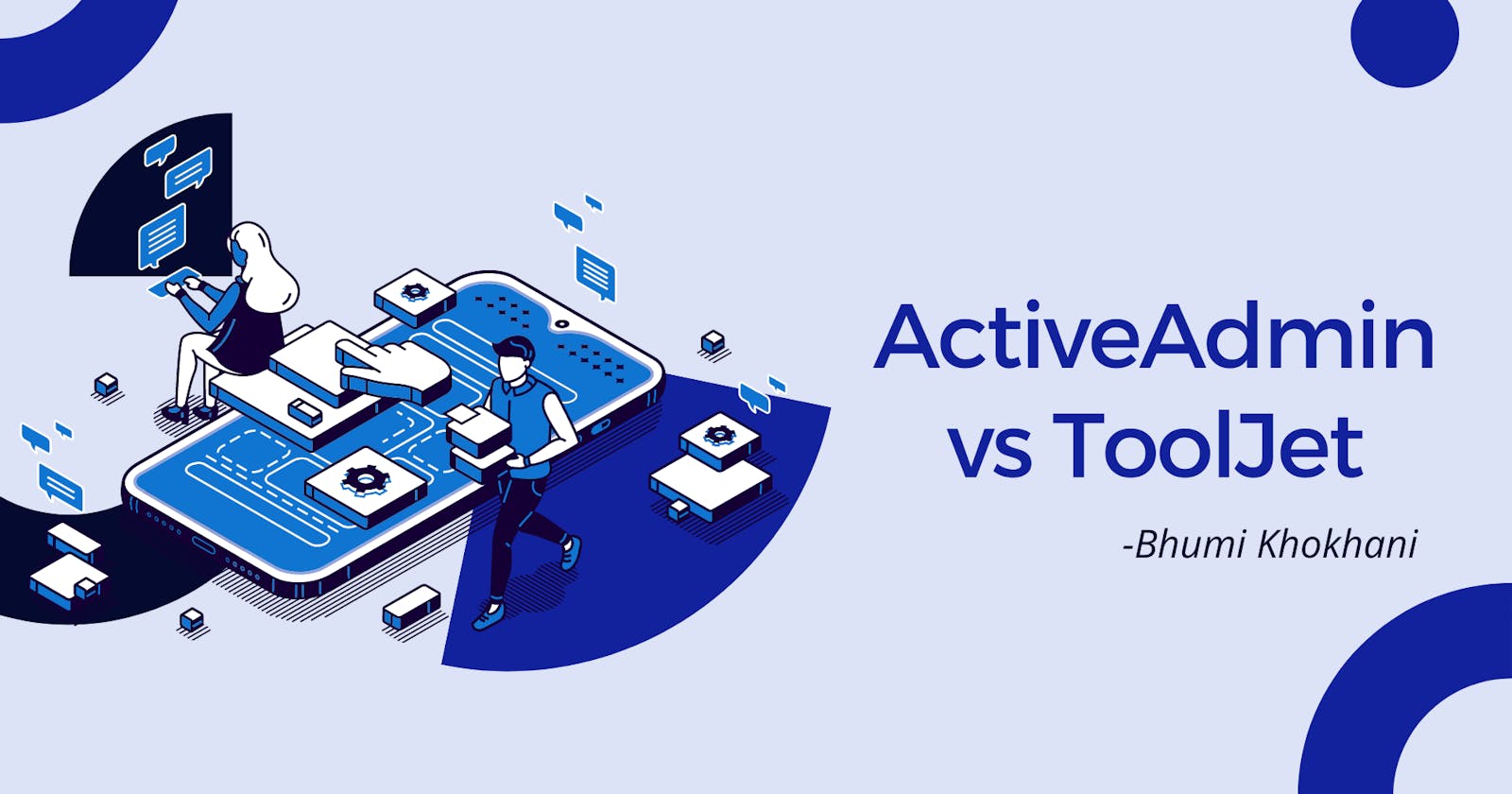ActiveAdmin vs ToolJet
Learn how Tooljet beats ActiveAdmin in many ways, and how shifting to this open-source framework will benefit your project
The link to the original post is here
Introduction
Most mid-sized web apps require some form of data management and monitoring. That is why we must develop and maintain internal tools to control what happens on our site.
There are several frameworks available for creating internal tools and admin panels for your live web project. You can use the frameworks available in the open-source market instead of appointing a team to develop basic admin panels.
But what if I told you that you didn't have to build these tools from scratch? Let’s know more about it in this article.
Why do we require frameworks?
Building interactive web apps in less time have never been easier thanks to the low-code and no-code trends. If you're a developer, you shouldn't be worrying about these kinds of platforms because most businesses use web frameworks such as Django or Ruby on Rails.
You simply focus on your product's essential features and outsource simple operations to these ready-made solutions. These low-code platforms are crucial to know as they may save you a lot of time when designing a small internal tool or admin panel that connects to a database.
Benefits of frameworks
The biggest benefit we derive from such a framework is increased efficiency.
These frameworks enable us to connect to our databases, perform basic CRUD (create, read, update, and delete) tasks, and arrange all of this functionality into a user-friendly interface. As a result, the majority of these frameworks have drag-and-drop components.
You don't need to engage a professional UI team to create a stunning interface; instead, utilize a pre-built one to streamline all operations.
Time/Speed - Using NoCode tools to build applications saves a lot of time.
Cost - NoCode tools take very little engineering time and effort. Companies can construct the main product with their competent engineering resources.
Maintenance - Using NoCode tools to deploy and scale tools doesn't require any DevOps expertise; deployments are as simple as clicking a button.
To summarize, the frameworks listed below provide a predetermined UI that connects to your backend and offer easy management tools for your team, but they are not a substitute for robust web frameworks.
Let's have a look at the two most notable ones!
ActiveAdmin
 Active Admin is a framework for developing administrative interfaces. It is defined as the administrative framework for business important Ruby on Rails apps. For a range of platforms, including Self-Hosted solutions, Online / Web-based, Ruby on Rails, SaaS, and Linux. It encapsulates popular business application patterns so that developers can quickly create beautiful and elegant interfaces with minimal effort.
Active Admin is a framework for developing administrative interfaces. It is defined as the administrative framework for business important Ruby on Rails apps. For a range of platforms, including Self-Hosted solutions, Online / Web-based, Ruby on Rails, SaaS, and Linux. It encapsulates popular business application patterns so that developers can quickly create beautiful and elegant interfaces with minimal effort.
Why is ToolJet better?
 ToolJet is an open-source, low-code framework that enables us to create internal tools without requiring any technical skills.
ToolJet is an open-source, low-code framework that enables us to create internal tools without requiring any technical skills.
This framework contains a drag-and-drop UI builder, as well as basic widgets and mobile layouts.
ToolJet can integrate with a variety of data sources, including Google Sheets, PostgreSQL, Redis, Elasticsearch, and even third-party apps such as Stripe. It also has a built-in query editor, which is supported by most databases.
Although it's a low-code tool, you may use the editor to create custom JS code if you want to build a special feature yourself.
You can also contribute to ToolJet's source code directly on GitHub because it's an open-source project.
Features
Coding is necessary to add a new page in ActiveAdmin. But in ToolJet, it is a no-code platform that allows you to create applications without writing any code.
Organizational and app-level flexible access control JS code can be written practically anywhere in the builder. Query editors for all data sources supported JS code is used to transform query results.
Airtable, Google Sheets, Slack, Stripe, and more databases and integrations are supported.
Widgets for charts, tables, maps, forms, and more are included. You can use the drag-and-drop app builder to add these widgets to your app.
Customizing the appearance of an ActiveAdmin dashboard took a lot of engineering work. The app builder makes it simple to customize ToolJet widgets.
ToolJet can be deployed to Heroku with a single click utilizing the 1-click deployment button. (Heroku: docs.tooljet.io/docs/setup/heroku) It merely takes 5-10 minutes to set up and only requires a few environment variables as input.
ToolJet is flexible since it doesn't set any restrictions; it's just as easy to connect to databases maintained by frameworks like Ruby on Rails, Django, or Laravel.
ToolJet's hosted solution (ToolJet cloud) enables you to immediately get started creating internal tools.
Installation, deployment, and scalability are all taken care of for you. ToolJet's base plan is completely free.
Closing
Understands and accepts the various low-code and no-code platforms. They're not designed to take the place of web developers or designers; rather, they're meant to help you save time while designing basic apps and focusing on the most important aspects of your business.
My personal opinion is to start with Tooljet and see whether it meets your needs; if it does, you'd be better off using it rather than wasting time designing a comparable UI with Active Admin.
Let me know if you have any queries in the comments section.
And would you be interested in using an open-source tool like ToolJet? Do let me know in the comment section below. I hope you enjoyed reading it!
Feel free to connect with me on LinkedIn | Twitter
If you like my work, you can extend your support by buying me a ☕. Thank you!


